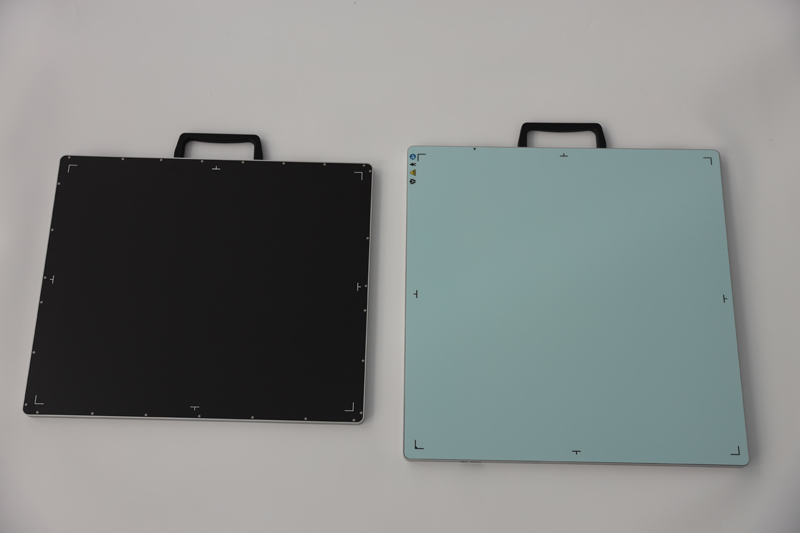Flat panel detectors (FPD) have revolutionized the field of medical imaging due to their advantages over traditional imaging techniques. These detectors provide high-resolution images with minimal radiation exposure, making them an essential part of today’s X-ray systems. Selecting the right size flat panel detector for a specific clinical application is critical for accurate and efficient diagnostic results. Below we discuss the factors to consider when selecting the appropriate flat panel detector size.
Learn about flat panel detectors:
A flat panel detector is an electronic device capable of capturing X-ray images directly on a thin plate, eliminating the need for traditional film-based image capture. They consist of a scintillator layer that converts X-rays into visible light, and an array of photodiodes that detect this light and convert it into electrical signals. The size of the panel directly affects the field of view and resolution of the image obtained.
Consider clinical applications:
The choice of the size of the flat panel detector depends largely on the clinical application and imaging requirements. In general radiography, a standard flat panel detector size of 17×17 inches is commonly used. This size is large enough to cover most routine exams, including chest x-rays and abdominal imaging. However, for specific applications such as extremity imaging or pediatric radiology, smaller size flat panel detectors (e.g. 14×17 inches) offer better maneuverability and patient comfort.
Resolution and field of view:
Another key factor in determining the size of a flat panel detector is the desired resolution and field of view. Higher-resolution flat-panel detectors can reveal finer details, such as small bone structures or delicate tissues. However, it is important to strike a balance between resolution and field of view. The larger flat panel detector size enables a wider field of view, reducing the need to reposition the detector during imaging. Smaller flat panel detectors are ideal for in-focus imaging where only specific areas need to be inspected.
Room Sizes and Patient Accessibility:
When considering flat panel detector size, it is important to consider the physical space available within the radiology department. Larger detectors may require more room to maneuver, especially in overcrowded spaces. Patient accessibility and comfort are also important aspects to consider. Bulky detectors can be uncomfortable for patients, especially those with limited mobility, so smaller size flat panel detectors are a more suitable choice.
Budget and upgrade possibilities:
Cost is always an important consideration when selecting any medical device. Larger flat panel detectors are generally more expensive, so evaluating your budget and availability of funds is critical. Also, it’s worth considering the flexibility for future upgrades. Some flat panel detector systems offer the option to replace the detector panel within the same unit, allowing an upgrade to a larger or higher resolution panel without replacing the entire system.
in conclusion:
Selecting the correct flat panel detector size is critical for optimal imaging results in medical diagnostics. Consideration of clinical application, resolution, field of view, physical space, patient comfort, and budget will help guide the decision when selecting the size of a flat panel detector. Consultation with the medical device manufacturer or an experienced radiology professional is always recommended to ensure the best choice for each specific imaging requirement.
Post time: Jun-25-2025


